BBM241 Operations and Productivity Assignment Solution - University
VerifiedAdded on 2022/08/15
|6
|713
|24
Homework Assignment
AI Summary
This assignment solution analyzes the differences between services and manufacturing, highlighting that services are intangible and customer-involved, while manufacturing produces tangible goods. It examines the operations of Real Dairy Australia, detailing its inputs, processes (blending, material handling, logistics), and outputs (milk, butter). The core processes of input, transformation, and output are defined, alongside the importance of operations strategy and competitive priorities in enhancing customer relationships and driving new service development. The impact of global competition on productivity is discussed, emphasizing knowledge sharing and efficiency improvements. Furthermore, the assignment includes a productivity calculation example for a gardener, illustrating the effects of new equipment and break-even analysis. References to relevant academic sources are also provided.
1 out of 6
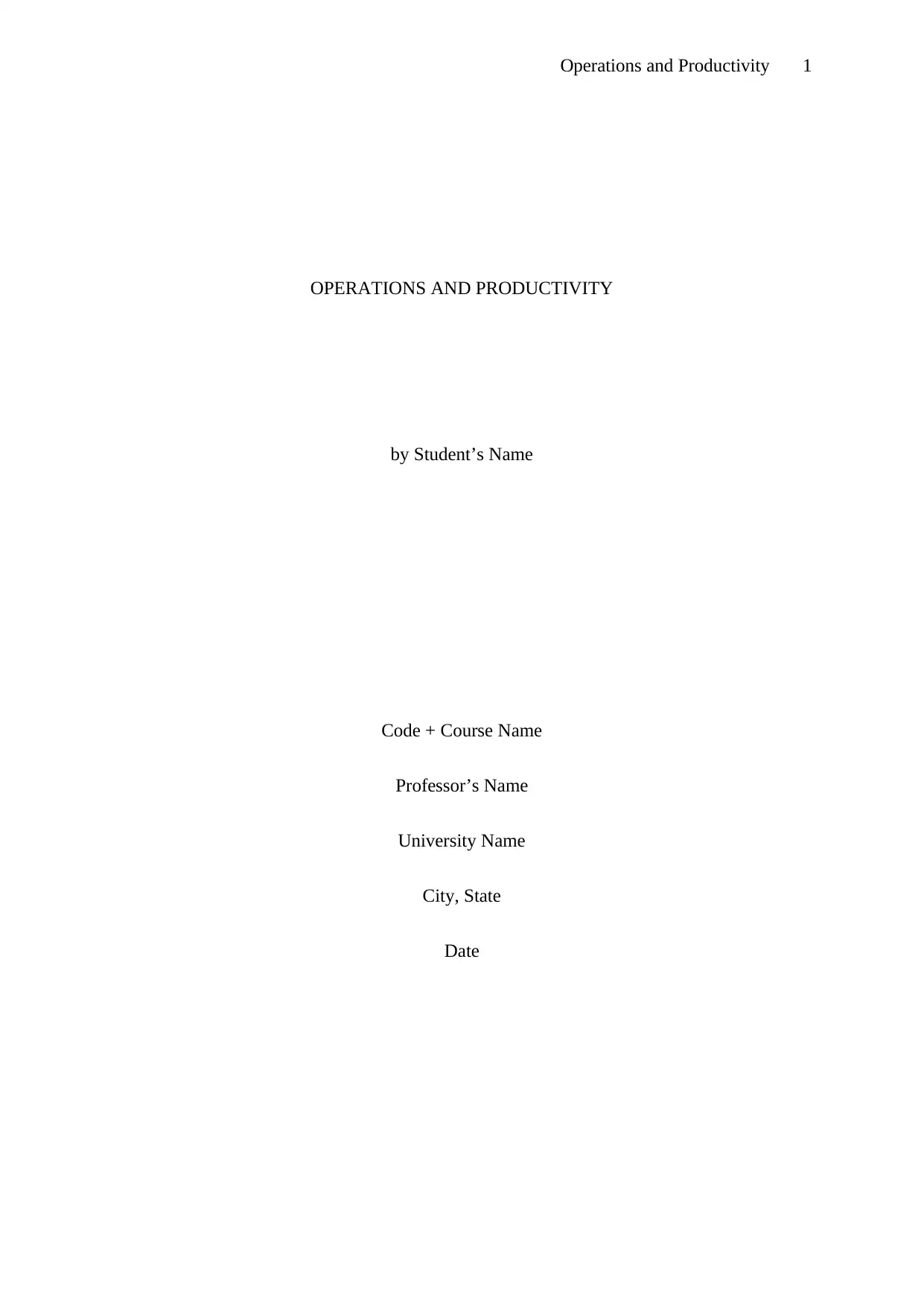
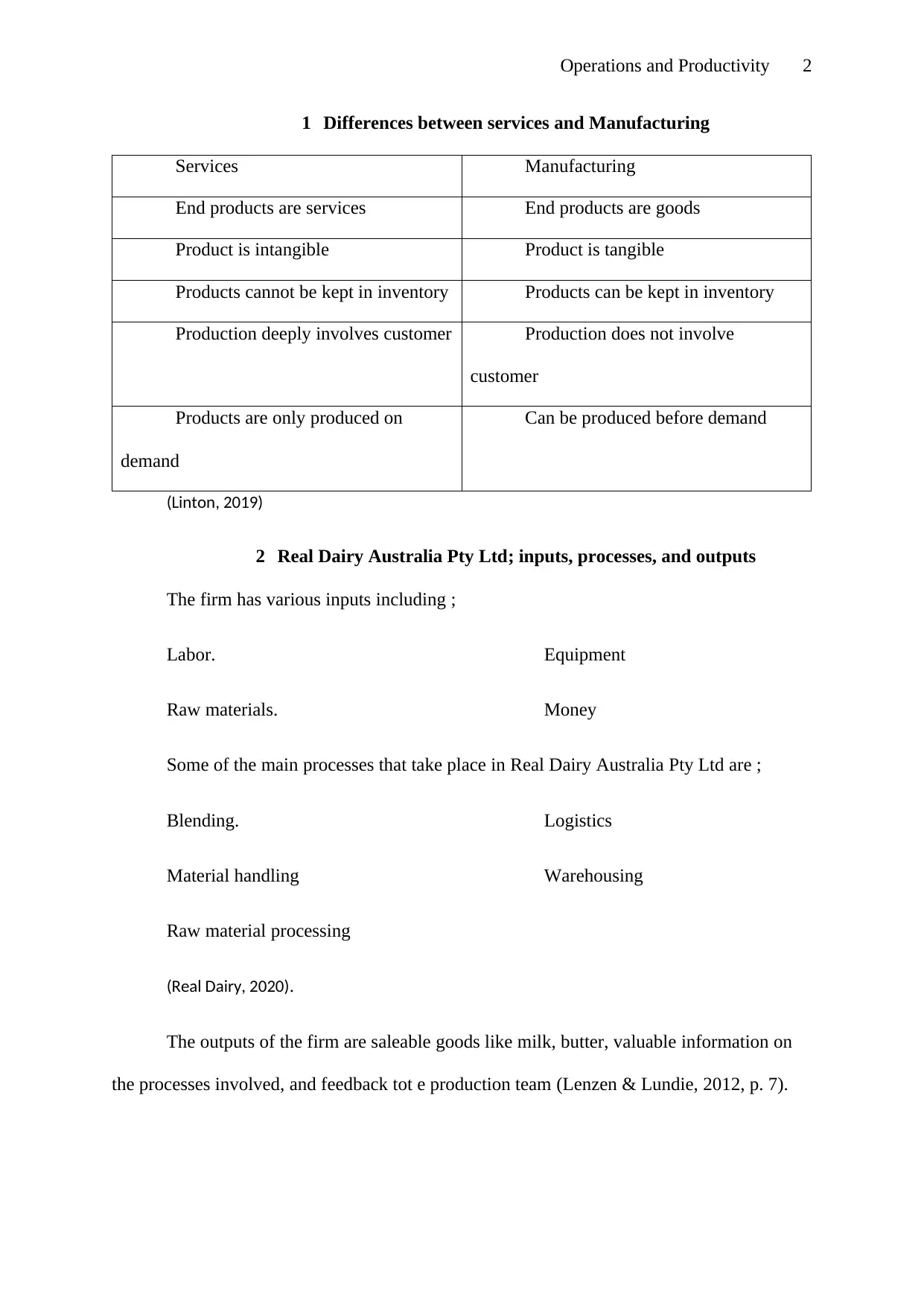
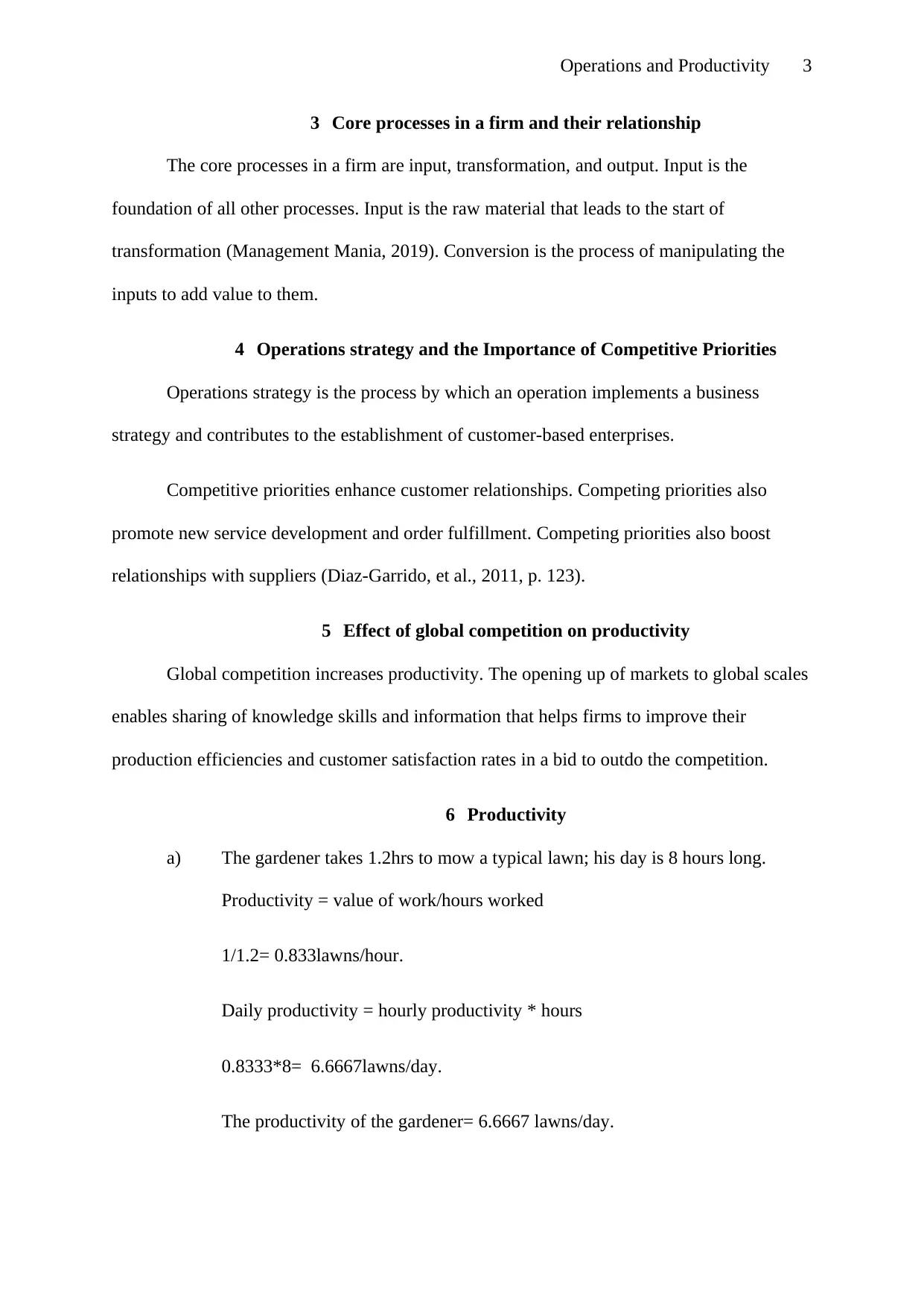

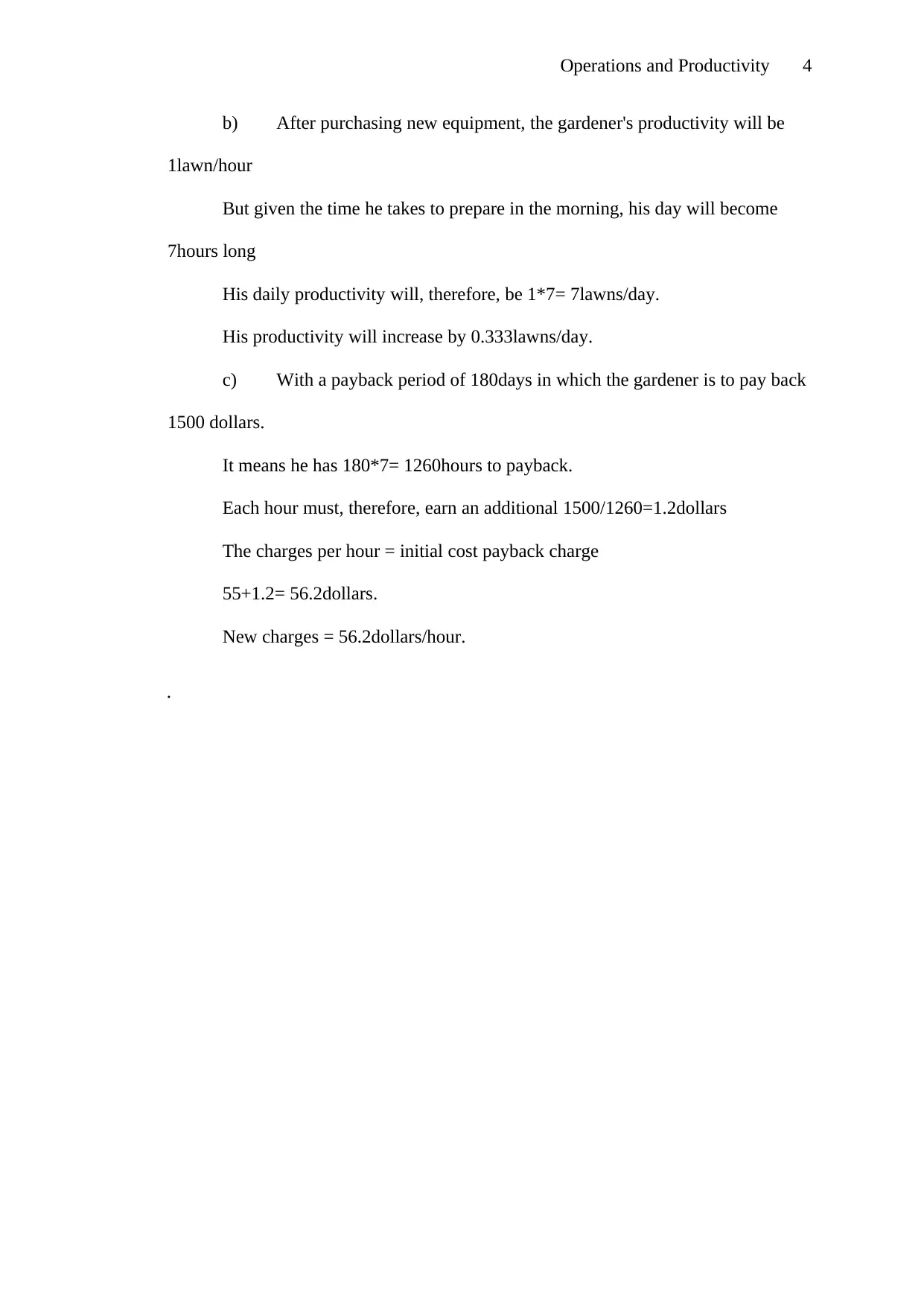
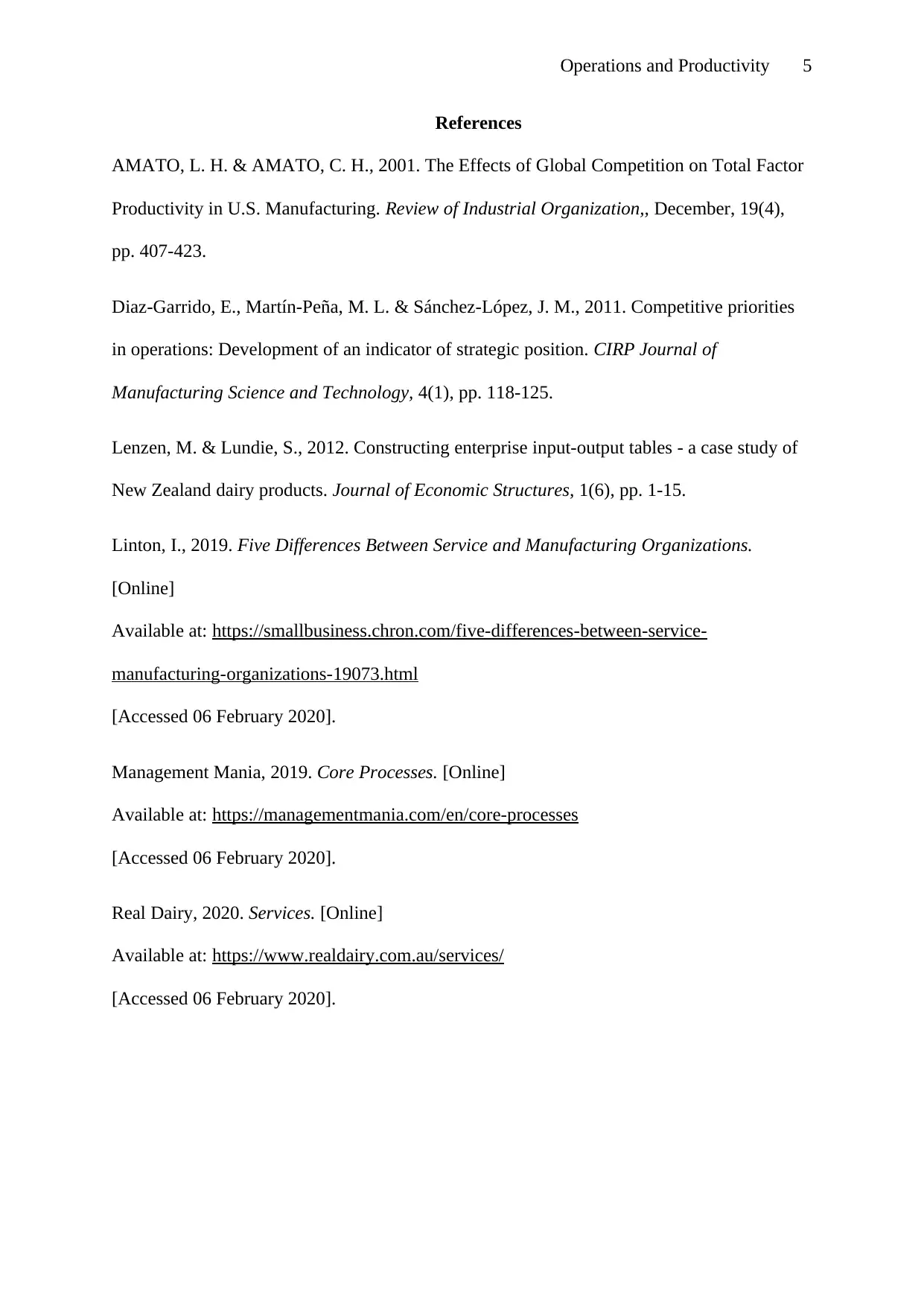

![[object Object]](/_next/static/media/star-bottom.7253800d.svg)